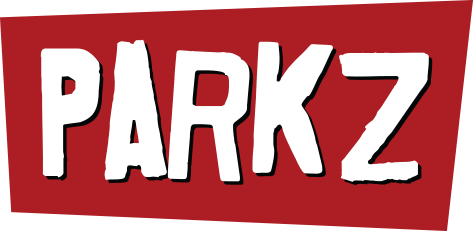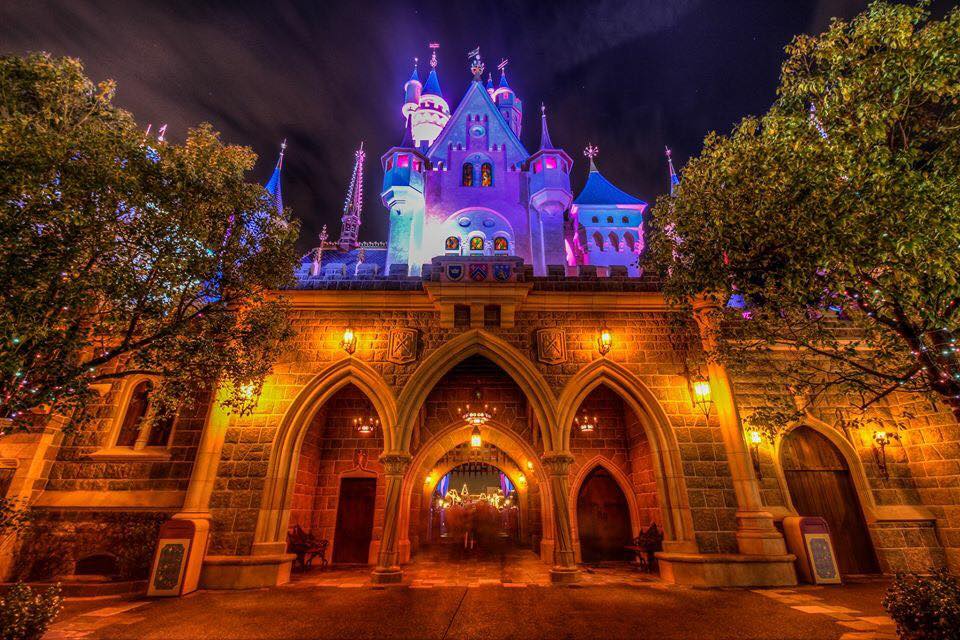-
Posts
614 -
Joined
-
Last visited
-
Days Won
50
Everything posted by Guest 239
-
Movie World is still owned by Village Roadshow but the company no longer trades publicly and were bought out by BGH capital. There was very little shake up in management during this transition.
-
The park's management is largely the same as it's been for the past decade. The only real difference is that they need to please their parent company instead of shareholders.
-

Movie World Scheduled Maintenance 2024
Guest 239 replied to themagician's topic in Theme Park Discussion
They have pumped a lot of money into that attraction in recent years with lengthy refurbishments and the boat 'upgrades'. Despite this, they have actually lost overall capacity which is the opposite of what you want to happen. They have little financial incentive to maintain the effects considering all of this. -

Dreamworld’s Ocean Parade Expansion 2023
Guest 239 replied to themagician's topic in Theme Park Discussion
The splash pad is a win. They've replaced a thoroughfare with an all-ages attraction that introduces what I believe is Australia's first interactive animatronic. This will be a genuine memory maker for a lot of families that isn't hidden behind an upcharge or paywall. -
Maintenance periods aren't factored in for all attractions. It'd be interesting to see how they compare because Superman has had a lot more scheduled maintenance than Leviathan yet they balance out to around the same average daily reliability.
-
This got me interested in going back and looking at the data. I don't have throughput data, but I do have statuses and wait times. The data I have is not 100% accurate because I'm relying on what their system feeds, but it does provide a good overview for how things are going. Out of the 17 attractions that VRTP update statuses for, since February between 10AM and 5PM, Leviathan is the 6th most unreliable attraction across property. I got this by comparing the rate at which the ride reported itself as being down and closed versus open. A big problem seems to be that it often opens late. Here's a breakdown of the likelihood that it'll be open for each 15 minute interval after opening: By around 11:30 things seem to become pretty stable, but 27% chance of it being open by 10:16 is pretty low. I do agree that Leviathan does the job for Sea World, but it definitely still seems to have some teething issues. Here's some bonus stats for those interested. This is the status breakdown of the main coasters between 11 AM and 4PM February across property: Since February it seems that Village coasters have spent an hour down for every two hours operating. Here is also the average wait by month. Leviathan is easily one of Village's most popular attractions.
-

Removal of virtual queue at VRTP?
Guest 239 replied to DaptoFunlandGuy's topic in Theme Park Discussion
Not quite. Fast Track and VQ are different. Fast Track gives you immediate access to a ride whilst VQ you still needed to wait a set amount of time. I have no idea whether they've ever been implemented but in their backend there is a tiered system that reduces a virtual queue wait time based on your tier. For example, if you pay $99 you get 50% off the current wait time, but if you pay $199 you get 90% off the current time, etc. This is what I imagine we will see implemented soon.- 33 replies
-
- virtual queue
- vrtp
-
(and 1 more)
Tagged with:
-

Removal of virtual queue at VRTP?
Guest 239 replied to DaptoFunlandGuy's topic in Theme Park Discussion
This is mostly a problem with market leaders. Many are cashing in their position at the expense of guest experience to ensure short term profits despite potential long term attendance problem because shareholders only care for the dollars that they can see now and not in the future.- 33 replies
-
- virtual queue
- vrtp
-
(and 1 more)
Tagged with:
-

Removal of virtual queue at VRTP?
Guest 239 replied to DaptoFunlandGuy's topic in Theme Park Discussion
Theoretically, yes. Queues don't add capacity. Reducing the number of people in a priority queue means that standby has less resistance and can flow more freely. The problem is that we can almost guarantee there is something in the works to replace VQ in a paid capacity because parks like Movie World are self-cannibalizing their revenue streams by reducing wait times. As waits drop, the incentive to purchase paid priority lowers. They need to make up that lost revenue somewhere.- 33 replies
-
- virtual queue
- vrtp
-
(and 1 more)
Tagged with:
-

Removal of virtual queue at VRTP?
Guest 239 replied to DaptoFunlandGuy's topic in Theme Park Discussion
Virtual queue being gone is a bummer but it's only exaggerating Movie World's existing capacity problem. I'd love to see the statistics of how many people were actually using it because it was a technical nightmare even for somebody who knew the tricks, but its loss will be felt by those who used it to make the park more bearable in peak periods. MW will always have the IP advantage which will attract more families, but Dreamworld are in a prime position to retake market share based off MWs shortcomings. The park's popularity is currently its biggest detriment as it can't support the amount of people wanting to visit. Not only that but MW is expensive. Dreamworld is cheaper, has a decent attraction lineup, and has the capacity to support decent crowds. It'll be interesting to see how the next 5 years play out with Dreamworld and MWs expansions.- 33 replies
-
- virtual queue
- vrtp
-
(and 1 more)
Tagged with:
-

Removal of virtual queue at VRTP?
Guest 239 replied to DaptoFunlandGuy's topic in Theme Park Discussion
They likely wont. Their comms are used almost exclusively for progressive change and the rest is relegated to a footnote on the website or an a-frame near the park entrance. (See Scooby, Arkham closure, Doomsday downgrade, Atlantis delays, etc.)- 33 replies
-
- virtual queue
- vrtp
-
(and 1 more)
Tagged with:
-
Doesn't surprise me. All VRTP properties are segmented in their backend system to allow for the sale of each attraction individually as an addon but they're usually disabled. The data is very basic at the moment which suggests somebody started the work but stopped midway through and forgot to disable them.
-

Disney Expanding Footprint Name In Australia
Guest 239 replied to Chalky's topic in Theme Park Discussion
Power of the brand and low journalistic standards. Disney operates 12 of the 25 most popular theme parks in the world as well people just don't resonate as much with the likes of Lego and Universal. The likes of News.com.au and DailyMail know that if somebody even remotely prominent mentions 'Disney' and 'theme park' in Australia that they've got the perfect article which will shared around social media and forums giving them glorious clicks to feed their family for another week. -

Disney Expanding Footprint Name In Australia
Guest 239 replied to Chalky's topic in Theme Park Discussion
You're more likely to spontaneously combust whilst getting a handshake from Betty White wearing a leopard patterned leotard than Australia getting a Magic Kingdom style Disney park. -
At first I thought a hotel of this size was silly for the parks out towards Oxenford, but considering that this will also service the Studios and inadvertently Dreamworld, I think it's a good addition to the area. Only issues I can see for Movie World is whether this ends up casting a big dirty shadow over the park for a majority of the day but I guess in Summer that wont be objected to.
-

Movie World Scheduled Maintenance 2024
Guest 239 replied to themagician's topic in Theme Park Discussion
Regarding maintenance and Doomsday, this sign has been added to the attraction. Just when I thought the bar couldn't get any lower, they decide to blame the guests for their terrible operations. Source Theme Park Social Network. -

Wizard of Oz - Movie World Arkham Asylum Replacement
Guest 239 replied to Park Addict 93's topic in Theme Park Discussion
Retheming Wild West Falls would be a mistake. It's easily one of Australia's most prestigious attractions and no attraction built in the last 15 years can hold a candle to it. In saying that, I agree that part of the park is very sparse and could do with some more. -
If they have abandoned it then good. This was doomed to fail from the start and the only winners are the third-party company that created the platform. The discounts, competitions and all of that other stuff should be included with the season pass, not some extra cost NFT project.
-
Does each gondola need its own operator? If so I'd say it's purely a cost thing.
-
One of the four horsemen of our parks being major ass. Just one more position to be filled.
-

Sandy Shores Lagoon Refurbishment at Sea World 2023
Guest 239 replied to themagician's topic in Theme Park Discussion
VIVIDs crowd control fences look better than this and VIVID is free. -
Looks like they're starting to wrap the wall. Images from Dreamworld's Golden Years:
-
Let's have some fun with data! Our parks are likely sitting on decades worth of data from their internal systems, surveys and feedback forms. Assuming certain aspects, let's experiment with a simple guest satisfaction model. Let's consider multiple factors such as operational attractions, queue wait times, weather, key attraction availability, crowd level, food and drink quality, park cleanliness, and staff performance. We score each factor from 0 (no negative impact) to 9 (high negative impact). Next, we can assign weights to these factors based on visitor feedback from surveys and such, reflecting their relative importance to overall satisfaction. That gives us: Predicted Guest Satisfaction = WnN + WqQ + WwW + WaA + WcC + WfF + WpP + WsS Where: N, Q, W, A, C, F, P, S are the scores for each factor. Wn, Wq, Ww, Wa, Wc, Wf, Wp, Ws are the respective weights. Let's consider an example day where we have the following impact scores: Operational Attractions: 2 Queue Lengths: 7 Weather: 0 Key Attraction Availability: 1 Crowd Level: 4 Food & Drink: 0 Cleanliness: 0 Staff: 0 And the weights based on visitor feedback are: Attractions: 0.2 Queues: 0.3 Weather: 0.1 Key attractions: 0.1 Crowd level: 0.1 Food and drink: 0.1 Cleanliness: 0.05 Staff: 0.05 Substituting the scores and weights into the formula: Satisfaction Score = 0.2*2 (Attractions) + 0.3*7 (Queues) + 0.1*0 (Weather) + 0.1*1 (Key attractions) + 0.1*4 (Crowd level) + 0.1*0 (Food and drink) + 0.05*0 (Cleanliness) + 0.05*0 (Staff) This gives us a score 3.0. With this system the lower, the better. Using the same survey and feedback data we could fairly comfortably determine a threshold score such as, for example, 4 .0 that might warrant guest compensation. Is this perfect? Not at all, but it's scalable and modular. It takes some of the guess work out of our problem.
-
I don't think there needs to be a blanket rule. If you're an operator than you'd have a pretty good idea as to whether guests are in for a shoddy day or not, and if you can't then that's a bigger problem in itself.




